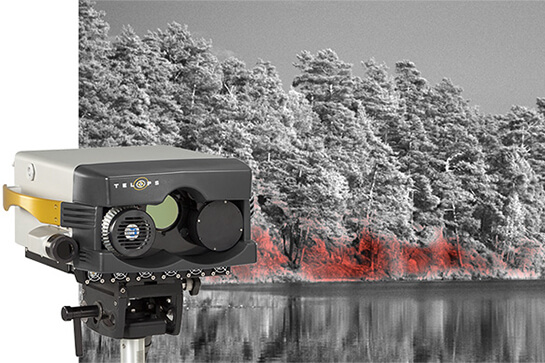
With the Telops Hyper-Cam, scientists are able to detect and identify methane present in a scene, and to locate it precisely in an image or video, pixel by pixel. Recently, scientists from Linköping University, in Sweden, were thus able to « film » methane emissions in real time – a breakthrough that could play a significant role in the fight against climate change. Their results were published in the prestigious journal Nature Climate Change.
The Telops Hyper-Cam has also been successfully used by Total E&P under an R&D project to demonstrate the real-time 3D reconstruction of methane gas clouds. During the experiment, three Hyper-Cams were installed around the area being observed and networked to a central computer. Each Hyper-Cam produced in real-time a radiometrically calibrated hyperspectral image. The computer merged the hyperspectral data from the imagers to compute and display the 3D cloud as well as to estimate the leak rate. Total’s work has been presented at the SPE/ATCE Conference in Dubai, UAE, on September 28th, 2016.
Infrared imaging can help visualize fugitive emissions and small gas leaks under various environmental conditions and industrial contexts. As many gases are toxic and/or flammable, like natural gas (CH4), efficient gas detection from a remote location is advantageous for safety purposes. The selectivity brought by high-resolution infrared hyperspectral imaging allows to identify the chemical nature of the gases, reducing at the same time the frequency of false alarms.
The unpredictable behavior of volcanos make infrared remote sensing a very attractive investigation tool for surveillance and academic purposes. Passive infrared hyperspectral imaging allows the detection and identification of multiple gases like sulfur dioxide (SO2) and silicon fluoride (SiF4) coming out from craters and fumaroles, from distant locations, without the need of additional equipment.
One of our Field Applications Scientist, Marc-André Gagnon, along with a team of French scientists from the Université Blaise Pascal, climbed the Stromboli volcano, in Italy, to gather hyperspectral thermal imaging data of its eruption with the Telops Hyper-Cam.